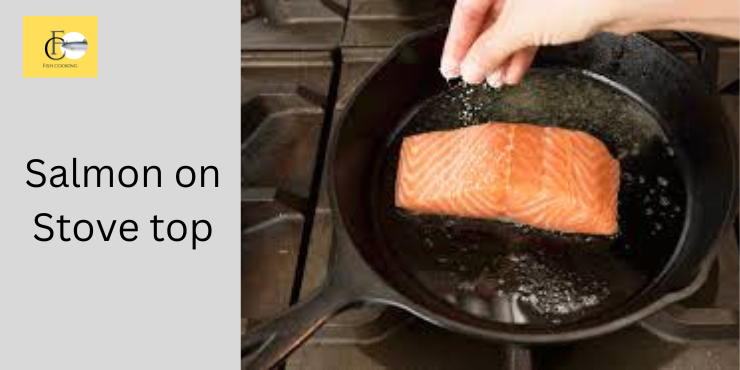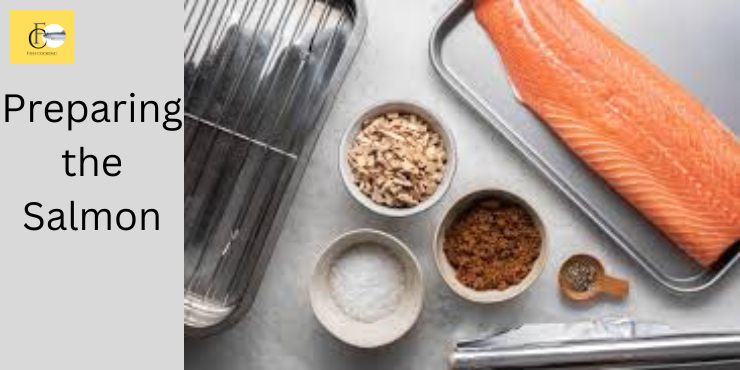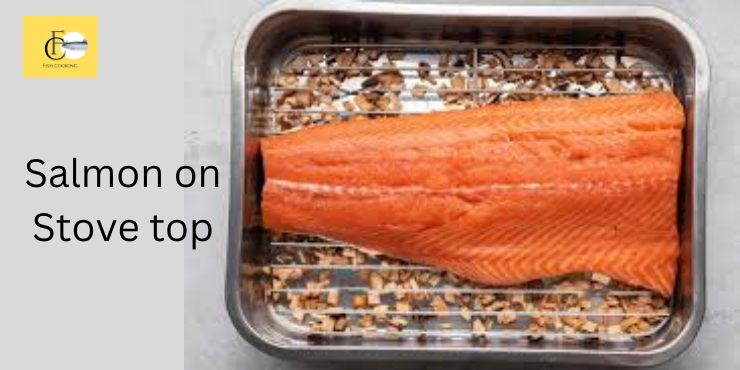Table of Contents
Introduction
How to Best Way Salmon on Stove top, Cooking salmon perfectly is an art that can transform a simple meal into a gourmet experience. If you’ve ever wondered how to cook salmon on the stovetop to achieve that crispy skin and moist, flavorful flesh, you’re in the right place. The stovetop method is a fantastic way to prepare salmon, giving you control over the cooking process and resulting in a delicious, restaurant-quality dish.

Choosing the Right Salmon
When it comes to salmon, the type you choose can make a big difference in flavor and texture.
Wild-Caught vs. Farm-Raised
Wild-caught salmon generally has a richer flavor and firmer texture compared to farm-raised salmon. It’s also often considered more environmentally friendly. However, farm-raised salmon can be a good option if you’re looking for a more affordable choice.
Fresh vs. Frozen
Fresh salmon is ideal for stovetop cooking, but high-quality frozen salmon can also be a great option. If using frozen salmon, make sure to thaw it completely before cooking.
Preparing the Salmon

Preparation is key to cooking perfect salmon.
Cleaning and Drying
Start by rinsing the salmon under cold water and then pat it dry with paper towels. Removing excess moisture is crucial for achieving a crispy skin.
Seasoning Options
You can keep it simple with just salt and pepper, or get creative with various seasoning blends.
Simple Salt and Pepper
A generous sprinkle of salt and freshly ground black pepper can enhance the natural flavors of the salmon.
Advanced Seasoning Blends
Consider using a mix of garlic powder, paprika, and a touch of cayenne for a bit of heat. Lemon zest and dill also make excellent additions.
Selecting the Right Pan
The type of pan you use can impact the outcome of your salmon.
Types of Pans Suitable for Cooking Salmon
Non-stick pans are often preferred because they make it easier to flip the fish without it sticking. However, stainless steel or cast iron pans can also work well if properly preheated and oiled.
Why Non-Stick Pans Are Preferred
Non-stick pans require less oil and reduce the risk of your salmon sticking to the pan, ensuring a cleaner cooking process and easier cleanup.
Prepping the Stovetop
Before you start cooking, it’s essential to prep your stovetop correctly.
Setting the Right Temperature
Medium-high heat is generally ideal for cooking salmon. It ensures a good sear without burning the fish.
Importance of Preheating the Pan
Preheating your pan is crucial. A properly heated pan helps in achieving that perfect crispy skin.
Using Cooking Oil
Choosing the right oil can enhance the flavor and texture of your salmon.
Best Oils for Cooking Salmon
Olive oil, canola oil, and avocado oil are excellent choices. They have high smoke points and add a subtle flavor.
How Much Oil to Use
A tablespoon of oil is usually enough. Too much oil can make the fish greasy, while too little can cause sticking.
Cooking the Salmon
Now comes the main event—cooking your salmon.
Placing the Salmon in the Pan
Place the salmon skin-side down in the pan. This helps to crisp up the skin and allows you to monitor the cooking process more easily.
Cooking Time and Techniques
Skin-Side Down First
Cook the salmon skin-side down for about 4-5 minutes. This allows the skin to become crispy.
Flip and Finish
Carefully flip the salmon and cook for another 3-4 minutes until the flesh is opaque and flakes easily with a fork.
Checking for Doneness
Knowing when your salmon is perfectly cooked is essential.
Visual Cues
Look for a light pink color and opaque flesh. The skin should be crispy and golden.
Using a Thermometer
For precise cooking, use a meat thermometer. The internal temperature should reach 145°F (63°C).
Common Mistakes to Avoid
Avoid these common pitfalls to ensure your salmon turns out perfectly.
Overcooking
Overcooking can result in dry, tough salmon. Keep an eye on the cooking time and use a thermometer to check for doneness.
Using Too Much Oil
Using too much oil can make your salmon greasy and mask its natural flavors. Stick to about a tablespoon of oil.
Flavor Enhancements
Elevate your salmon with these flavor boosts.
Adding Herbs and Spices
Fresh herbs like dill, parsley, and thyme can add a burst of flavor. Sprinkle them on after cooking to keep them fresh and vibrant.
Finishing with a Sauce
A drizzle of lemon butter or a simple garlic sauce can enhance the taste of your salmon.
Serving Suggestions
Pair your perfectly cooked salmon with these delicious side dishes.
Side Dishes That Pair Well with Salmon
Consider serving your salmon with roasted vegetables, a fresh salad, or quinoa. These sides complement the rich flavor of the fish.
Presentation Tips
For a restaurant-quality presentation, garnish with fresh herbs and a slice of lemon. Serve on a warm plate to keep your dish at the perfect temperature.
Health Benefits of Salmon
Salmon is not only delicious but also packed with nutrients.
Nutritional Value
Salmon is rich in omega-3 fatty acids, protein, and vitamins like B12 and D.
Benefits for Heart Health
The omega-3s in salmon can help reduce inflammation, lower blood pressure, and decrease the risk of heart disease.
Sustainability Considerations
When choosing salmon, it’s important to consider sustainability.
Choosing Sustainable Salmon Options
Look for certifications like MSC (Marine Stewardship Council) to ensure your salmon is sustainably sourced.
Impact on the Environment
Sustainable fishing practices help protect marine ecosystems and ensure fish populations remain healthy.
Frequently Asked Questions
How Long Should I Cook Salmon on the Stovetop?
Cook salmon for about 4-5 minutes on the skin side and another 3-4 minutes on the flesh side.
Can I Cook Salmon Without Skin?
Yes, but cooking with the skin on helps protect the flesh from overcooking and sticking.
What Is the Best Temperature to Cook Salmon?
Medium-high heat is ideal for stovetop cooking. Aim for an internal temperature of 145°F (63°C).
Should I Cover the Pan While Cooking?
It’s not necessary to cover the pan. Cooking uncovered helps the skin crisp up.
How Can I Store Leftover Cooked Salmon?
Store leftover salmon in an airtight container in the refrigerator for up to 3 days. Reheat gently to avoid drying it out.
Conclusion
Cooking salmon on the stovetop is a simple yet rewarding culinary technique. With the right preparation, seasoning, and cooking methods, you can create a delicious and nutritious meal that’s sure to impress. So, the next time you’re in the mood for salmon, skip the oven and try the stovetop method for a change. Happy cooking!

